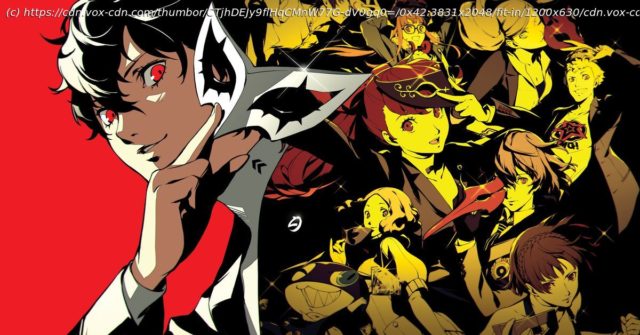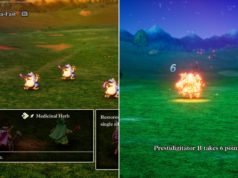What’s the best Persona game? We ranked all of the games in the mainline series and the spinoffs, from Revelations: Persona all the way to Persona 3 Reload.
Persona has been around for over two decades now, and it’s more popular than ever. Sprawling from the Shin Megami Tensei franchise, the main subseries consists of RPGs from the perspectives of high school students, all of whom fight using entities called Personas.
Over the years, especially with the release of Persona 3, the games adopted a calendar-based schedule focused on social outings and activities after the last classroom bell rings each day. It makes for a novel way of experiencing stories that are anywhere from the 60-hour mark to over 100 as you create bonds with characters, strengthening your combat abilities and feeding into your visits to dungeons.
With multiple re-releases, remasters, and spinoffs that run the gamut of genres, ranking them isn’t easy. First of all, doing so leads to the painful realization that some of these games are no longer available to purchase, unless you have older consoles at hand or the willingness to spend hundreds of dollars above MSRP on physical copies. If anything, the list below provides a history lesson on the versatility of the concept behind Persona, and everything that the series has left behind since its conception. 21. Revelations: Persona
Where to play: Your best bet is a PlayStation Classic, which comes pre-downloaded with it
The ground zero for the series we know today. Revelations: Persona was released in Japan and North America for PlayStation 1 in 1996. It provides an obtuse but equally interesting early look at the concept of high schoolers fighting demons after departing from the Shin Megami Tensei mainline. Just keep in mind that it’s a time capsule in every sense. If random encounters and a confusing map aren’t enough to deter you, the characters’ baffling race-swapping and odd translation of the Western release might.20. Shin Megami Tensei: Persona
Where to play: Unavailable as of July 2, 2021, except from secondhand sellers
While it retains the original’s retro feel, Shin Megami Tensei: Persona revitalizes the first game for the PlayStation Portable in multiple aspects. It includes a better English translation, an easier overworld map to navigate, faster movement while exploring dungeons, and more quality-of-life improvements. Most importantly, it has the Snow Queen quest, a sizable storyline that’s missing in Revelations, and anime cutscenes. The soundtrack is different, too, and more on par with the latter games.19. Persona 5: Dancing in Starlight
Where to play: PlayStation 4 and PlayStation Vita
Released in 2018, Persona 5: Dancing in Starlight is a rhythm game spinoff built on the same foundation as Persona 3: Dancing in Moonlight. The biggest difference, and flaw, is its original track list. It suffers from the fact that it came out before most of the new soundtracks, lacking a greater and richer variety across the board. Sure, there are DLCs you can buy, including songs from the anime, Persona 5: The Animation, as well as Persona 4 Arena Ultimax and Persona Q. But they also work in Persona 3: Dancing in Moonlight, which is a much more rounded package.18. Persona Q2: New Cinema Labyrinth
Where to play: Unavailable as of March 31, 2023, except from secondhand resellers
If you ever wondered what would happen if the casts of Persona 3 Portable, Persona 4, and Persona 5 all got together in a haunted movie theater, well, that’s Persona Q2: New Cinema Labyrinth in a nutshell. The 2018 release takes the foundation of Q and improves it in the gameplay sense. But it also lacks novelty, and the fan service of the first is further aggravated by having yet another crew in an already crowded setting, leading to less room for meaningful interactions.17. Persona Q: Shadow of the Labyrinth
Where to play: Unavailable as of March 31, 2023, except from secondhand resellers
The first entry in the series to be developed for a Nintendo console, Persona Q: Shadow of the Labyrinth, released on 3DS in 2014, is a mashup developed by the Persona and Etrian Odyssey teams, introduced as a first-person dungeon crawler. The casts of Persona 3 and Persona 4 join forces in a chibi-style depiction, alongside a few new characters. It’s a different yet intriguing crossover that provides more depth for those who loved exploring dungeons in the original games.16. Persona 4 Arena
Where to play: Xbox consoles via backward compatibility with the 360 version, available for purchase digitally until July
The spinoff era of the Persona series kicked off with a fighting game. Sure, why not? Persona 4 Arena, released in 2012, sees Persona 4’s protagonist returning to Inaba after the events of the story. After some events unfold, both the original cast and some characters from Persona 3 all end up involved in a fighting tournament P-1 Grand Prix. It’s as wacky as it is exhilarating. But there’s a better way to experience it.15. Persona 4 Arena Ultimax
Where to play: PlayStation 4, Nintendo Switch, and PC for the re-release, or Xbox 360 if you own the console, as it’s not backward compatible with later platforms
Persona 4 Arena Ultimax was released on consoles in 2014, serving as a direct sequel to Arena. It has a bigger roster of characters, bringing even more folks from the Persona 3 cast, a robust set of mechanics (such as charging up attacks and being able to choose Shadow types, among others), and a story told in a visual novel style. Keep in mind that the story from Arena is included in the PS4, Switch, and PC versions, and it was originally available as DLC for the PlayStation 3 and Xbox 360 versions.14. Persona 4: Dancing All Night
Where to play: PlayStation Vita and PlayStation 4, the latter only available with the Endless Night Collection bundle
Considering how prevalent music is in every Persona entry, a rhythm game was bound to happen sooner rather than later.






